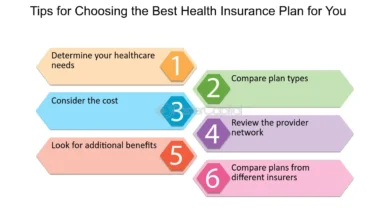
Understanding Prescription Drug Coverage in Health Insurance Plans
Prescription drug coverage is an important part of any health insurance plan. Whether you’re managing a chronic condition or just preparing for unexpected health issues, understanding how drug coverage works can save you money and ensure that you receive the right medications when you need them. Let’s break down the essentials of prescription drug coverage and how it fits into your health insurance plan.
What Is Prescription Drug Coverage?
Prescription drug coverage refers to the portion of your health insurance plan that helps pay for your medications. Each plan has a list of covered drugs, known as a formulary, which includes both generic and brand-name medications. Your plan might cover all or just a portion of the cost, depending on factors like drug tiers and copayments.
How Does It Work?
Prescription drug coverage often works through a tiered system. Drugs are placed into different categories, or “tiers,” based on their cost. Generic medications, which are usually cheaper, are placed in lower tiers, while specialty or brand-name drugs tend to be in higher tiers.
Here’s how a typical tier system works:
- Tier 1: Generic drugs, usually the least expensive.
- Tier 2: Preferred brand-name drugs, costing more than generics.
- Tier 3: Non-preferred brand-name drugs, which are more expensive.
- Tier 4 or Specialty Tier: Specialty drugs for complex conditions. These are the most expensive.
Your out-of-pocket costs depend on which tier your prescribed medication falls into. Lower-tier drugs generally have lower copayments, while higher-tier drugs come with a larger cost.
Formularies and Prior Authorization
Insurance plans manage their prescription drug coverage through formularies. A formulary is a list of medications that your plan covers. It’s essential to check if your prescribed medication is included in your plan’s formulary to avoid paying full price.
Some drugs may also require prior authorization, meaning your doctor must get approval from your insurance before the plan will cover the drug. This process ensures that the medication is medically necessary and cost-effective.
Read Also: I Fear No One, But Respect Everyone. – Tymoff
The Role of Generic Drugs
Generic drugs are often a cost-saving option for many people. These drugs are equivalent to brand-name medications in terms of dosage, safety, and effectiveness but typically cost much less. Insurance plans often encourage the use of generics by offering lower copays or coinsurance for these medications.
Deductibles and Copayments
Many health insurance plans include a prescription drug deductible, which is the amount you must pay out of pocket before your insurance starts covering your medications. Once you’ve met your deductible, you will typically pay a copayment or coinsurance for each prescription, depending on your plan.
For example, if your health plan has a $500 drug deductible, you will need to pay $500 for your prescriptions before the insurance begins contributing to the cost. After meeting the deductible, you might pay a $10 copay for a generic drug or a higher amount for brand-name drugs.
Medicare and Marketplace Plans
Medicare prescription drug plans and Marketplace health insurance plans often have different structures for covering prescription drugs. Marketplace health insurance plans, for instance, typically include prescription drug coverage as part of their essential health benefits. When shopping for a plan, make sure to review the drug coverage options carefully. This will help ensure that your medications are covered, and your out-of-pocket costs remain affordable.
Conclusion
Understanding how prescription drug coverage works is vital to managing both your health and your finances. Knowing what’s covered under your insurance, the costs of different drug tiers, and the options available for generic drugs can help you make informed decisions. By carefully reviewing your plan’s formulary and drug coverage options, you can ensure that you’re getting the best care without overpaying for medications.



